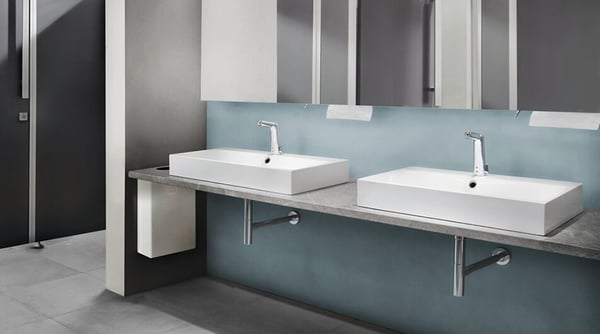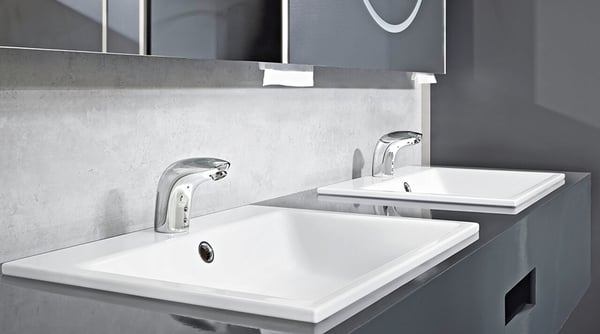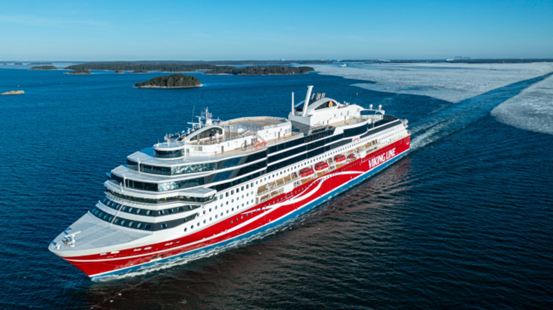The current construction landscape shows a continuing rise in sustainable building projects. A 2019 Ramboll survey of architects, developers, real estate investors and contractors found that of their future-slated projects, more than half were expected to be sustainable. This shows that sustainable solutions are still a financial commodity worth investing in.
For sustainable buildings, water use is one area that has the potential for great impact in building performance. From the embodied water use in the construction phase to the operational water use once the building is completed, buildings use a considerable amount of water in their lifecycle.
 Touchless faucets can help save significant amounts of water and energy in larger buildings
Touchless faucets can help save significant amounts of water and energy in larger buildings
The share of residential building water use (Copenhagen Resource Institute)
- showers and baths (35%)
- toilet flushing (25%)
- washing clothes (14%)
- dishwashing (8%)
- drinking and cooking (5%)
- room cleaning, irrigation and car washing (5%)
- other (8%)
Impact of operational water use
According to the United Nations Environment Programme (UNEP), once in the operational phase, residential buildings account for 72% of total water use compared to non-residential buildings, and a staggering 25% of water use globally.
With European Commission concluding that the average European citizen uses approximately 160 litres of water per day, sustainable building certifications such as LEED and BREEAM are focused on operational water use where they can have a tremendous influence in global water consumption.
Sustainable can still mean profitable
Finding water efficiency solutions for operational water use – ensuring, for example, that water only flows when it’s needed – will produce savings in overall operating costs. For the market economy, Ramboll expects, as sustainable buildings show more positive outcomes for operational costs and residential satisfaction, the financial benefits will inspire more green and smart solutions.
Some faucet terminology
- Flow rate: how much water (litres per minute) comes out of faucet or shower when turned on
- Afterflow time: the period of time that water flows after hands are removed from the sensor (3 seconds on average)
- Flow time: the time period a faucet runs when smart sensor is activated
- Sensor sensitivity: the distance hands need to be from the faucet to activate it
The potential of intelligent water use
Investments in water-efficient sanitary fittings, such as faucets and showers with low flow and afterflow rates, is encouraged by the EU commission to promote water-use solutions through the installation of high-performance water-using products.
 Touchless faucets with precise sensors and conservative afterflow settings can provide optimal water savings
Touchless faucets with precise sensors and conservative afterflow settings can provide optimal water savings
While standard touchless faucets and showers have a water flow rate of around 6 litres per minute, faucets specifically designed for Green Buildings can lower water flow rates close to 1.7 litres-per-minute. Touchless faucets with precise sensors and conservative afterflow settings can provide optimal water savings, while touchless faucets with Bluetooth technology allow afterflow to be adjusted to as low as 1-second compared to the 3-second afterflow rate of standard faucets and showers.
All touchless washbasin faucets are available with Bluetooth, which enables them to be monitored and controlled remotely via an app – across the whole building or down to the individual faucet level. Building operators can get an overview of water flow and afterflow rates and can adjust sensor sensitivity and water flow times, which can heavily reduce the building’s water consumption.
Faucet choices are one step in the right direction
HANSA believes that the decisions made at the beginning of a building project have long-term implications. Choosing the right faucets can give sustainable buildings the tools for smart water-use management and overall, provide savings in operational water use and the operating costs of buildings.






